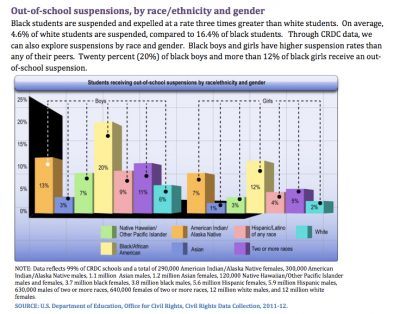Schools are doling out suspensions “like Tic Tacs,” here are some ways to keep kids in the classroom
As a recent school board member in a racially and economically diverse district, I know there has never been a tougher time for educators.
Schools are being asked to raise achievement and meet tougher standards, with fewer resources and diminishing paychecks. But in the midst of worrying about the Common Core and testing metrics, we need also to consider whether an issue too long seen as marginal – school discipline – is hampering our efforts to close the achievement gap.
The rate of suspensions has doubled since the 1970s to 3.45 million students in grades K-12 during the 2011-12 academic year, according to theCivil Rights Data Collection just released by the U.S. Department of Education. On March 13, a group of 26 education and behavioral health experts known as the Research-to-Practice Collaborative on School Discipline Disparities announced the results of a three-year research project, concluding that zero-tolerance discipline is neither effective nor fairly applied. (I am a co-founder and member of the group.) Here are details of our findings:
While bouncing disruptive students from the classroom can give exasperated teachers and classmates a needed breather, the end result is actually more misbehavior. Comparing schools with similar demographic characteristics, suspended students are more likely to reoffend, and schools with higher suspension rates do worse academically overall.
Most troubling, an overreliance on suspension excludes from instruction those children who can least afford to miss school. Black boys are four times as likely as their white peers to be suspended from school. Black and Latino children with learning disabilities are at highest risk of all for school removal. “Contrary to assumptions, this yawning disparity is not explained by poverty or more serious misbehavior by black students,”


